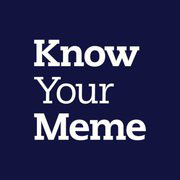Autonomous Sensory Meridian Response (ASMR)
Confirmed 488,023
Featured Episode
| Navigation |
| About • Origin • Spread • Notable Examples • Search Interest • External References • Recent Images • Recent Videos |
About
Autonomous Sensory Meridian Response or ASMR is a term used to describe a sensory experience characterized by a pleasant tingling sensation in the head and scalp, which can be triggered by sounds like whispering or brushing, and visual stimulus like painting or drawing. On YouTube, the phenomenon inspired the creation of “whisperer” videos, in which people attempt to trigger the viewer’s ASMR by speaking in a soft voice and making various sounds with inanimate objects.
Origin
One of the first online forum discussions about the phenomenon was started on the Steady Health Forums[3] by member okaywhatever on October 19th, 2007. In the thread titled “Weird Sensation Feels Good”, the original poster (OP) described a strange itchy sensation triggered by several different social interactions. On June 4th, 2008, SteadyHealth member tingler replied to the thread, who referred to the phenomenon as “Attention Induced Head Orgasm” (AIHO) and claimed to have experienced it for as long as he could remember.
That same year, the now-defunct web forum AIHO.org was launched for people to discuss strange sensations.[1] On December 12th, 2008, the Yahoo group “Society of Sensationalists”[4] was launched with a similar purpose, gaining over 3,200 members in less than three years. In February of 2010, Jennifer Allen coined the term “Autonomous Sensory Meridian Response” when she started a Facebook[5] group dedicated to the sensation.
Spread
On April 24th, 2010, the first ASMR-related event was held called “Hug Your Brain Day”[7], which encouraged people to engage in activities that triggered ASMR.

On June 16th, 2010, the ASMR Research & Support[8] website was launched by Jennifer Allen with an aim to support the scientific study of the phenomenon. On June 23rd, the YouTube channel The Unnamed Feeling[10] was launched, which created playlists highlighting various ASMR triggering videos. On February 17th, 2011, Redditor mahi-mahi linked the ASMR Research & Support website in a post titled “TIL about ASMR, aka ‘that unnamed feeling’ or ‘head orgasms’” to the /r/todayilearned[9] subreddit. The following day, Redditor MrStonedOn created the /r/ASMR[11] subreddit as a place to share ASMR-triggering web videos. On February 27th, 2012, The Huffington Post[20] published an article titled "ASMR: Orgasms for Your Brain", reporting on the wide variety of online communities surrounding ASMR. On March 12th, the neuroscience blog Neurologica[27] published a post on ASMR, which noted that the Internet was instrumental in the discovery of the phenomenon.
YouTube Whisperers
On March 26th, 2009, YouTuber WhisperingLife uploaded a video titled "Whisper 1 – hello!", which featured a woman whispering that she created the channel because she loved to hear people whisper (shown below). On October 8th, 2010, the web forum YouWhisper[13] was launched, where members shared their favorite YouTube whispering videos.
On December 8th, ASMR Research & Support Forums[14] member HFM submitted a thread titled “YouTube and the Whisper Community”, listing YouTuber Soothingwhisper[15] as a notable producer of ASMR-triggering videos. On December 23rd, The Unnamed Feeling[12] published a post noting that many YouTubers were using whispering as a common trigger in ASMR videos. On July 31st, Vice[30] published an article reporting on whispering videos and other ASMR Internet communities. On March 29th, 2013, the NPR[31]syndicated program This American Life broadcast a story by novelist Andrea Seigel and her experiences with ASMR and the whispering community (shown below).
Wikipedia Documentation
On July 18th, 2011, The Unnamed Feeling[16] reported that a Wikipedia[19] article has been created for the phenomenon. In September 2011, the page was marked for deletion by several community members on the grounds that the concept lacked scientific evidence and reliable sources. On September 19th, The Unnamed Feeling[18] published a post titled “Help Save the ASMR Wikipedia Page!”, calling for readers to assist in improving the entry in order to save it from deletion. On September 26th, The Unnamed Feeling[17] posted an update that the Wikipedia page had been removed for a lack of scientific evidence. As of early April 2013, the Wikipedia page has since been restored.

International ASMR Day
In March of 2012, members of the “I Am ASMR” Facebook[28] group designated April 9th as the “International ASMR Day." On March 9th, a Facebook[29] page titled “International ASMR Day” was created, which gained over 3,200 likes in the following 13 months. On April 8th, 2013, YouTuber TheWaterwhispers uploaded a collaboration video with YouTuber GentleWhispering in honor of the 2013 International ASMR Day (shown below). Within 24 hours, the video received over 8,400 views and 175 comments.
Notable Examples
Ice-Eating Videos
In March 2018, ASMR videos featuring people eating ice on camera began circulating on the Chinese video-sharing app Kwai, with collections uploaded to Instagram and YouTube (shown below). That month, several articles about the ASMR trend were published on various news sites online, including Mashable,[32] Cnet,[33] The Daily Dot,[34] Slate[35] and NY Post.[36]
Cody Ko Video
On May 1st, 2019, YouTuber Cody Ko posted a video entitled "ASMR has gone to far." In the video, Cody Ko criticizes ASMR and the creators who make ASMR-related content. Specifically, the YouTuber looks at Eve Donnelly, who eats supposedly inedible objects like deodorant, rocks, makeup and chalk. Donnelly has amassed more than 33,000 subscribers since joining YouTube in 2015.[38] Within two days, the video received more than 1.6 million views (shown below).
The following day, the video was covered on The Daily Dot. [37] They wrote:
ASMR definitely has done its part to soothe anxieties and act as a sleep aid for its vast online community around the world. But it seems ASMR artists are still pushing the fad to see how far it can go; for instance, there are whole genres dedicated to ASMR chalk-eating and bug-eating. Donnelly isn’t the first or even the second person to eat deodorant.
Search Interest
External References
[1] Blogspot – ASMR The Story So Far
[2] Blogspot – ASMR Wikipedia Page Shut Down
[3] SteadyHealth – Weird Sensation Feels Good
[4] Yahoo – Society of Sensationalists
[5] Facebook – Autonomous Sensory Meridian Response
[6] ASMR-Research – External Links to ASMR Experiences
[7] Facebook – Huge Your Brain Day
[8] ASMR-Research.org – ASMR Research and Support
[9] Reddit – "TIL about ASMR, aka "that unnamed feeling" or head orgasms
[10] YouTube – The Unnamed Feeling
[12] Blogspot – ASMR Community on YouTube is Growing
[13] YouWhisper (via Wayback Machine)- Forum
[14] ASMR Research & Support – Youtube and the whisper community
[15] YouTube – SoothingWhisper
[16] The Unnamed Feeling – ASMR is Now on Wikipedia
[17] The Unnamed Feeling – ASMR Wikipedia Page Shut Down
[18] The Unnamed Feeling – Help Save the ASMR Wikipedia Page
[19] Wikipedia – Autonomous Sensory Meridian Response
[20] The Huffington Post – ASMR – Orgasms For Your Brain
[21] Android Pit – ASMR – Extreme Relaxation (page not available)
[22] MetaFilter – There's a name for that
[23] Anti-Valentine – ASMR – What is This Tingling Sensation in my Head?
[24] ASMR Videos – ASMR Videos
[26] Thought Catalog – I Have ASMR, Do You?
[29] Facebook – International ASMR Day
[30] Vice – ASMR the good feeling no one can explain
[31] This American Life – Tribes
[32] Mashable – The latest Chinese social media trend is eating ice
[33] Cnet – New Instagram sensation
[34] The Daily Dot – Videos of woman eating ice are the latest viral trend in China
[35] Slate – Ice Eating Is the Skin-Tingling
[36] NY Post – Why creepy videos of people eating ice are going viral
[37] The Daily Dot – ASMR YouTubers are eating deodorant, glass, and rocks
[38] YouTube – Eve Donnelly
Share Pin













